Lessons From 15 Years: Successful Marketing Relies On Great Content
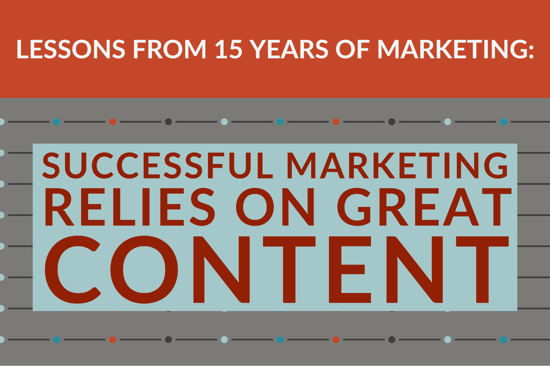
Any good integrated marketing and PR program is built on a foundation of planning, strategy and interdepartmental collaboration. But the bricks, steel, windows and doors that make up the structure the world sees are composed of content.
Content is essential, whether you are talking about basic website text on the homepage and in FAQs, downloadable whitepapers, reports, and other resources, or blog posts, bylined articles contributed to industry media, social media updates, or even videos and infographics and other images. Content matters.
In fact, nearly 3 in 4 marketers say relevant content creation is their most effective SEO tactic, driving search traffic to their website. (Source)
If only creating great content were easy, but I know, and you know, that isn’t the case. If it were, then we wouldn’t see reports like the one linked above in which 1 in 3 marketers cite relevant content creation as their greatest challenge.
I agree that creating great content isn’t easy. It requires hard work. But I’ve learned over the last 15 years that hard work to create great content pays off, and I’d like to share with you what I think makes content great. Then, in my next lesson, I’ll detail a proven approach to creating relevant marketing and PR content that helps our clients achieve their goals.
____________________________________________________________________
This post is one in a 15-part series looking back at the lessons learned in my 15 years as founder and owner of JONES Marketing & PR. Find two of the most recent posts in the series here:
-
Lessons From 15 Years: Integrate PR & Marketing To Maximize Results
-
Lessons From 15 Years: Telecom Industry Marketing Means Staying On Top Of Everchanging Trends
____________________________________________________________________
Marketing Lesson #13: High quality content is essential for successful integrated marketing and public relations.
More than 90 percent of marketers told the Content Marketing Institute that their companies view content as a business asset. That just makes sense when 84 percent of people expect brands to produce content that entertains, provides solutions and produces experiences and events, and 91 percent of consumers are prepared to reward brands for their authenticity. (Source)
Still, we come back to that statistic at the top about how creating relevant content — not just pumping out high quantities of mediocre content — is a challenge. Let’s look at why quality matters and what quality means.
Why does high quality content matter?
Content is marketing's favorite buzzword. Everyone seems to recognize the power of content, which means everyone, including everyday consumers and corporate level B2B decision-makers, is constantly bombarded with new content from every angle: blog posts, social media, email newsletters, YouTube channels, a host of streaming options, not to mention the holdouts in traditional media such as newspapers, magazines, direct mail and television.
Think about this:
-
More than 7.5million blog posts are published on the Internet every day. (Source)
-
More than 500 million tweets are sent every day. (Source)
-
More than 8.5 billion Google searches are made every day. (Source)
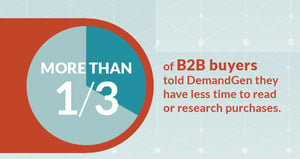 No one can keep up with all of that, so only the best content will get the attention of readers, prospects and customers. In fact, 46 percent of B2B buyers told DemandGen that they find themselves overwhelmed by the amount of content available, At the same time, more than one-third say they also have less time to read or research purchases.
No one can keep up with all of that, so only the best content will get the attention of readers, prospects and customers. In fact, 46 percent of B2B buyers told DemandGen that they find themselves overwhelmed by the amount of content available, At the same time, more than one-third say they also have less time to read or research purchases.
Altogether, that means that in order to perform its duties of building awareness, generating leads, and supporting sales, your marketing and PR content can’t be mediocre. It has to be great.
What makes marketing and PR content “great”?
How can you distinguish quality content from content that just will not perform?
I shared my formula for great content with the Missouri chapter of the Public Relations Society of America – see a segment of my presentation here.
The short story is this: I believe great content has five key characteristics (also outlined in our Content Quality Report Card, which you can download and use to evaluate your own content).
1. Great content tells a story.
Using marketing content to tell a story can take many forms. It should show a problem that is being solved, and when possible, it should include a character to root for and show the human side of your products and services. Sometimes, finding the story your content will tell seems straightforward.
For example, West Corporation (now Intrado) told the same story for two very different audiences in citing a case study about its customer Ochsner Health System.
Ochsner Health Systems’ program used West’s technologies to directly contact male patients who were past due for a colonoscopies or upper endoscopy. The media outreach West and JONES conducted about that program continued to build the reputation West had built under the TeleVox name with its multi-year Healthy World campaign.
In the first story, the focus is on how the technology potentially saves lives. When Ochsner used West’s system to contact more than 3,000 patients, nearly 600 scheduled the procedures. Based on estimates that a quarter of men tested will be diagnosed with pre-cancerous polyps, the program may have saved roughly 145 lives.
The second story was targeted toward healthcare CFOs, whose interests are not only in saving lives and helping create healthier communities, but also in maintaining the financial health of their healthcare institutions. Encouraging patients to complete routine recommended screenings, many of which are covered by insurance, can help healthcare facilities maintain cash flow and positive finances. According to the blog post and a more broadly-focused whitepaper from West on Optimizing Revenue, Ochsner’s campaign using West’s notification technology to reach out to patients made a significant revenue contribution as well. Based on a national average of $1,185 per procedure, the outreach efforts generated an estimated $685,000 in revenue for Ochsner.
Both of those stories seem fairly obvious. The first humanizes the technology — automated communications could save lives — and the second highlights how the technology solved a problem for a specific target audience. But what do you do when the stories aren’t as obvious?
Luckily, I covered that back in my first post in this series: If You Are Curious, You Can Make Anything Interesting. Even printer ink.
Check it out for a look at how, in my days with the agency Porter-Novelli, I helped HP earn national media attention about printer ink. Really. It’s all about finding the story.
2. Quality content is useful.
 A great story may not always be enough, especially when you are creating content intended to nurture leads in B2B industries with a long sales cycle. B2B buyers tend to do a lot of research before making a decision.
A great story may not always be enough, especially when you are creating content intended to nurture leads in B2B industries with a long sales cycle. B2B buyers tend to do a lot of research before making a decision.
Within that research, they are looking for content that is useful. It should offer a solution to problem, provide resources needed to implement the solution, and be more informative than promotional.
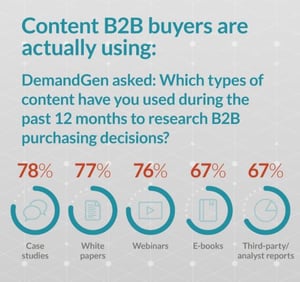 Some of the top formats B2B buyers look for in content from vendors, according to DemandGen, include:
Some of the top formats B2B buyers look for in content from vendors, according to DemandGen, include:
-
Case studies
-
White papers
-
Webinars
-
ebooks
-
Third-party/analyst reports
JONES helped healthcare management consulting firm Primaris launch into the public market (after primarily serving government clients through contracts acquired by replying to RFPs) by focusing on creating content that healthcare providers and facilities could use to solve problems.
Using complete content packages that included blog posts, downloadable resources, email campaigns, bylined articles and social media posts, Primaris transitioned from no website leads at all to generating more than 1,100 leads online in a single year. How? With content that was useful. (Download a full campaign example here to see how they did it.)
Downloadable resources such as whitepapers and checklists were promoted through the blog and social media, and then kicked off automated lead nurturing email campaigns. By providing information that the target audience could use, Primaris not only generated leads, but also established itself as a resource for knowledge about the complex healthcare management industry.


Similarly, Intrado Life & Safety used content that provides concrete, actionable advice to establish its position as the thought leader on the “State of 911” — using surveys of stakeholders such as 911 centers, call takers, consumers and first responders to develop a series of content campaigns that provide insight and advice.
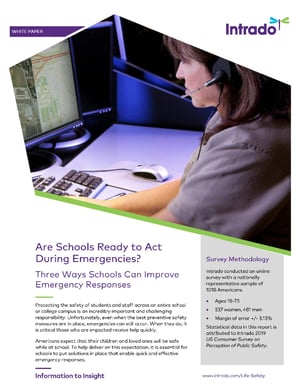
One of the first campaigns centered around a top of the funnel whitepaper focused on school safety. The paper outlined the results of a survey of more than 1,000 Americans about the readiness of schools to act in case of emergency. But it went beyond survey results to pinpoint three specific ways schools can improve emergency response (which, coincidentally, involve using Intrado’s technology, but the tips can apply to other solutions as well):
-
Alerting campus security when a school phone is used to call 911.
-
Making images, videos and other contextual data available to security teams.
-
Delivering automated notifications to students and staff.
The five-page whitepaper goes into detail about how these actions can be used to improve emergency response. The key, however, is that it is useful content for schools and emergency planning personnel.
3. Quality content is shareable.
Content performs best when it is shared. Surveys show that more than 90 percent of individuals trust word-of-mouth (which is really what social media shares, links, and forwarded emails are), and 3 in 4 are more likely to trust information shared by “normal people than that shared by brands. (Source)
You need to create content that your readers will want to share with others. In order to make it shareable, it should be interesting, entertaining, unique and/or timely — achieving all 4 is ideal, but obviously, some topics are less entertaining than others.
With the growing Internet of Things and consumers quickly adopting—and seeking information about how to use — the myriad options among connected devices and smart speakers, Intrado hooked into the consumer interest in smart speakers and how they are used to highlight issues of public safety in another of the whitepapers developed from its State of 911 surveys.
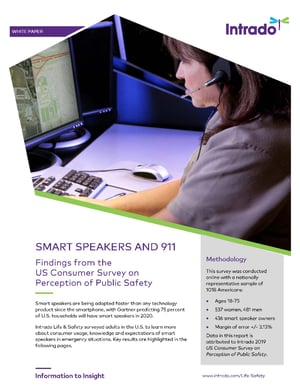 “Smart Speakers And 911” focused on consumer perceptions about public safety, including that fact that 96 percent of smart speakers owners think it would be helpful if smart speakers could call 911, and one in three say that they would likely use that capability if they experienced an emergency at home. Unfortunately, more than 60 percent didn’t know that at the beginning of 2020 smart speakers typically weren’t enabled to call 911. These are the kinds of interesting, and unique, tidbits of information that readers might share.
“Smart Speakers And 911” focused on consumer perceptions about public safety, including that fact that 96 percent of smart speakers owners think it would be helpful if smart speakers could call 911, and one in three say that they would likely use that capability if they experienced an emergency at home. Unfortunately, more than 60 percent didn’t know that at the beginning of 2020 smart speakers typically weren’t enabled to call 911. These are the kinds of interesting, and unique, tidbits of information that readers might share.
When information comes directly from research your own company conducted, it is likely to be unique. Especially if you’ve taken the time to perform an audit first to find out what topics are of interest to your customers but aren’t being addressed by others in your industry.
Bellevue University did just that.
The Nebraska-based private university was one of the first to delve into the world of online degrees. But rather than focus on what traditional college students—those just out of high school— are looking for, Bellevue instead took a deeper look at what employers want and the challenges faced by non-traditional adult learners. The results of surveys uncovered a way for Bellevue to differentiate from traditional colleges focused on the 18-22 crowd.
 By identifying the challenges employers face in hiring recent college graduates, along with the kinds of skills those already in the workforce believe would be useful in helping them advance, Bellevue University staked a claim to a needed shift in higher education to focus on mastery of skills and professional competencies.
By identifying the challenges employers face in hiring recent college graduates, along with the kinds of skills those already in the workforce believe would be useful in helping them advance, Bellevue University staked a claim to a needed shift in higher education to focus on mastery of skills and professional competencies.
The information uncovered in these surveys, and in the series of reports, media interviews, and news releases that they fueled, was unique in the higher ed ecosystem. The content extended to also talking about how to help close the achievement gap by making a valuable higher education experience accessible to those already in the workforce and facing the real-life challenges of balancing work, family, and education.

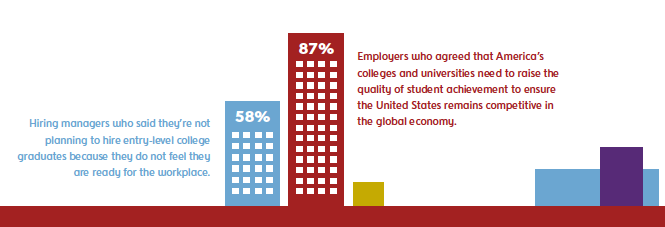
Another way of increasing the “shareability” of your content is to hook it onto current events that everyone is talking about. Newsjacking has long been a tool in the PR pro’s kit, and it can be used just as effectively in an integrated marketing and PR program as well.
JONES worked with QPS, a global contract research organization providing discovery, preclinical and clinical drug development services, to expand its reach and recognition in industry media through a series of planned thought leadership articles and press releases. But sometimes, you can’t plan out the best material a year in advance.
In this case, the uncertainty that surrounded the prospects of changing regulations and trade relations that could come with Brexit provided an opportunity for QPS to weigh in on how it could impact the drug research industry.
JONES and QPS prepared a special report, supported by a thought leadership article published by Bioanalysis Zone, outlining three ways Brexit would impact gene and cell therapy and clinical research projects.
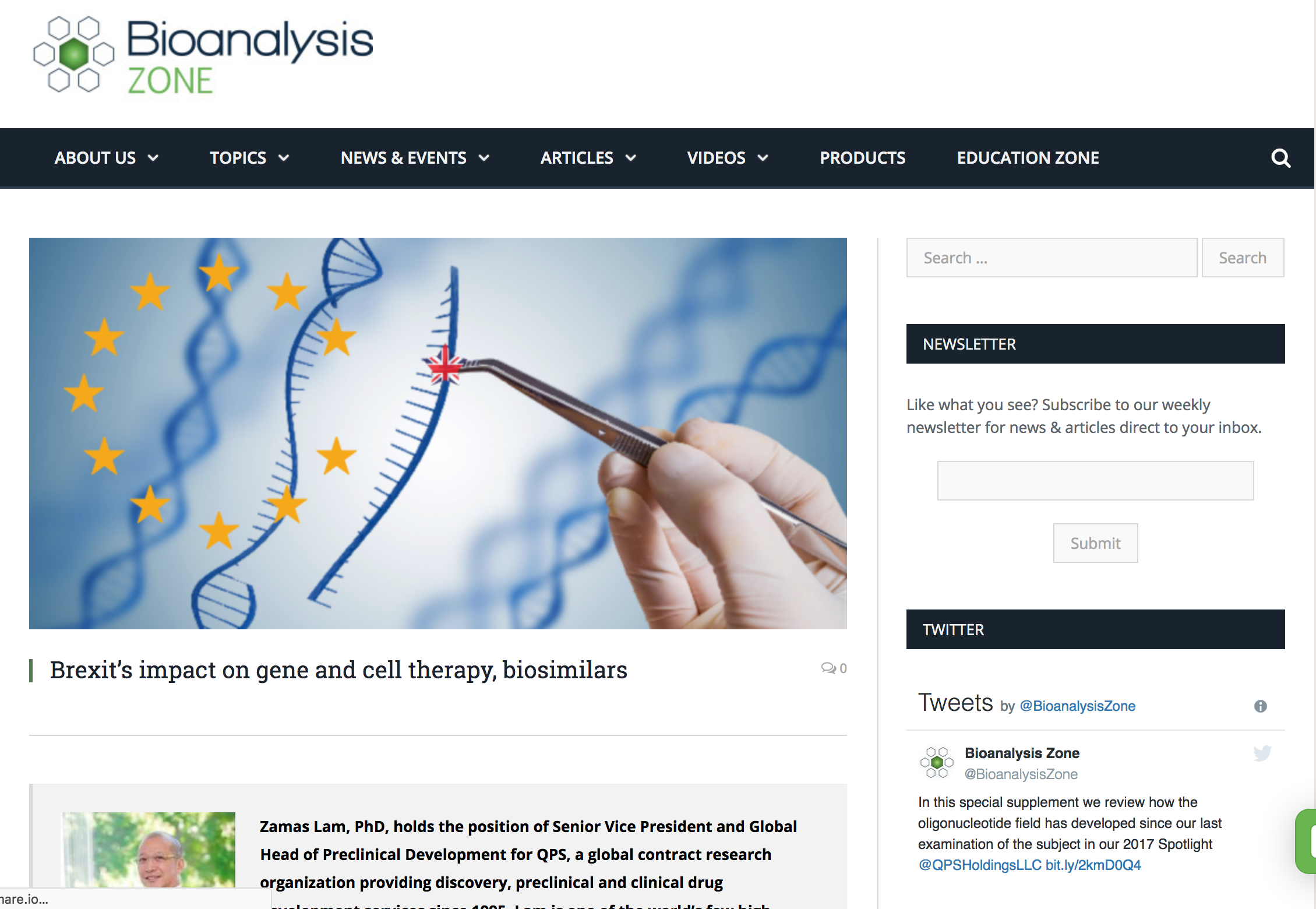
While this particular media outreach hadn’t been a part of the original plan, it provided an opportunity reach nearly 90,000 stakeholders in the bioanalysis field, including 14,000 bioanalytical contacts ranging from laboratory scientists to senior managers.
With locations in the United States, Austria, the Netherlands and around the globe, the article and report helped QPS demonstrate to its target audience how fully the company understands the implications of changes in global trade and regulation. And because the content was linked to a topic that was at the top of many minds in all areas of international business, it had the power to reach many through sharing.
4. Quality content understands all aspects of SEO.
Though your target audience may come across your content in many different ways — from social media to email newsletters — the reality is that organic search still drives a little more than half of all content consumption. (Source)
That means you still need to focus on making your content findable. Before you create a content strategy, take time for a few preliminary steps:
-
Identify your customer or buyer personas, including what their pain points are; what information they search for related to your business, product or service; and how they typically search for information. (More details on building buyer personas.)
-
Identify the keywords and search phrases your content will target.
-
Create a plan for promoting your content.
With those steps in mind, create your content with an eye toward search optimization. Remember, it takes more than keyword stuffing some generic text (which will likely actually result in penalization by the search engines).
I go into more detail on how to create SEO-focused content that performs in these posts:
5. Quality content is technically sound.
This may sound like a no-brainer, but spend a little time browsing around the ‘net and you will find no shortage of content created by those who either don’t have a strong grasp of grammar and spelling, or who are too rushed to bother with editing and proofreading.
Granted, even in my own writing, the occasional typo slips through. But 99 percent of your content should be error-free. That means double-checking punctuation, verb tense, capitalization, spelling and style. Choose a style guide and stick with it. That could mean either a standard guide such as the Chicago Manual of Style or the Associated Press Style Guide, an internal style guide or a combination of the two.
Another key part of creating content that is technically sound and professional is avoiding overuse of corporate jargon and buzzwords, especially if your target audience isn’t intimately familiar with the inner workings and specialized language used in your industry. Write for your target audience, not the folks in R&D who have made acronyms their BFFs.
One of the best ways to insure your content is technically sound, and written with your target audience in mind, is to hire great writers (and designers, and video technicians, etc.). Once you’ve hired those great people, give them the time they need to do their jobs well. (I’ve talked about this before: How To Hire The Right People & Work With The Right Clients and JONES Problem/Solution Paper: Great Content Requires Great Writers.)
How do you think your content stacks up? Whether you are working with an in-house team or partner with an agency for content creation, you need to set an expectation that all of your marketing content meets the five criteria outlined above.
Use this quiz to see if your current agency deserves an A grade.
Learn more about how we ensure that the content created by JONES for our clients delivers by downloading the JONES Content Creation Solution or set a time to visit with me about how we may be able to put our experience and expertise to work for your brand.
-1.png?width=1652&height=294&name=Jones(RGB)-1.png)

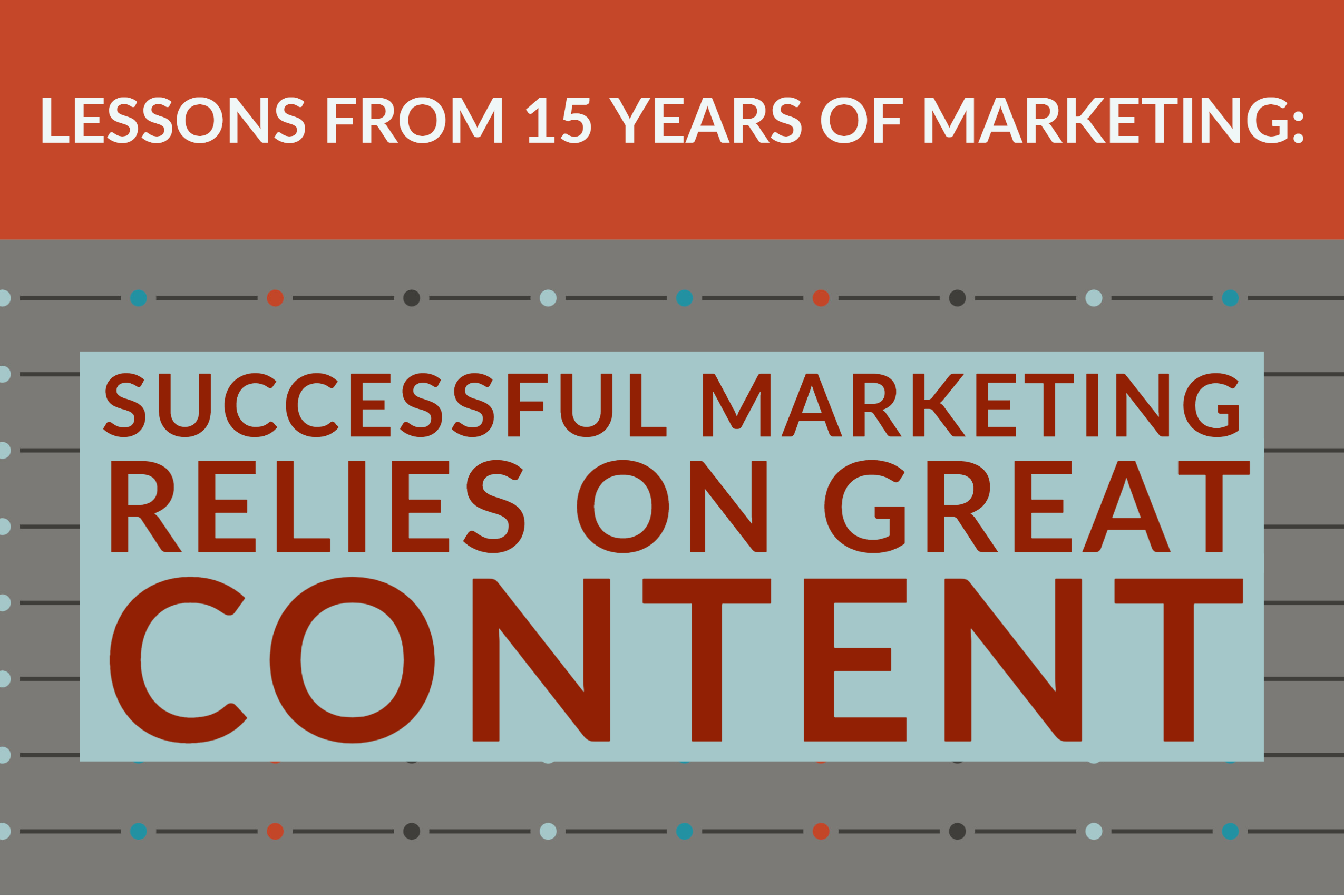






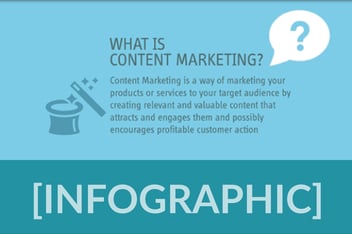
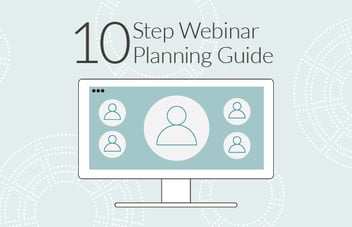
![How B2B Marketers Distribute Content [infographic]](https://www.jonespr.net/hs-fs/hubfs/How%20B2B%20Marketers%20Distribute%20Content%20%5Binfographic%5D.jpg?width=352&name=How%20B2B%20Marketers%20Distribute%20Content%20%5Binfographic%5D.jpg)

